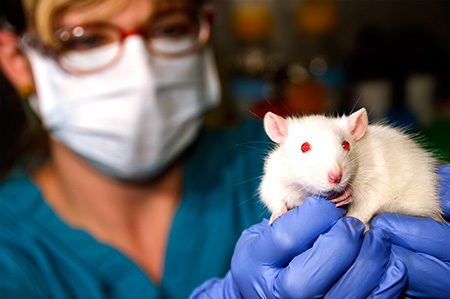 The major rat vendors all have some version of the Sprague Dawley rat, which was originally developed around 1925 by Robert Dawley, who started Sprague-Dawley, Inc. to distribute this stock1. Each vendor received their stock at different times, from different sources and in different quantities. Taconic Biosciences obtained its SD stock from the NIH Animal Genetic Resource in 1970, which had received stock directly from Sprague-Dawley, Inc. in 1945.
The major rat vendors all have some version of the Sprague Dawley rat, which was originally developed around 1925 by Robert Dawley, who started Sprague-Dawley, Inc. to distribute this stock1. Each vendor received their stock at different times, from different sources and in different quantities. Taconic Biosciences obtained its SD stock from the NIH Animal Genetic Resource in 1970, which had received stock directly from Sprague-Dawley, Inc. in 1945.
Variance in Outbred Stocks
Astute researchers know that substrains of inbred mice can vary from vendor to vendor as a result of being separated for many generations. Similarly, outbred stocks of mice and rats can vary from vendor to vendor, both as a result of being widely separated in time as well as due to genetic bottlenecks during original importation of a stock.Professor Dr. Wolfgang Löscher of the University of Veterinary Medicine Hannover has been studying variation between different vendor stocks for several years, as part of research focused on rats as epilepsy models. In 2011, his group reported significant variation in sensitivity to status epilepticus (SE) induction and post-SE pathology2. A recent paper extends those findings of inter-vendor variation to the pilocarpine model of temporal lobe epilepsy3.
In the 2011 report, the authors explained this line of inquiry into intra-stock and inter-vendor variation was prompted by the observation that the SE study performance of SD rats differed between SD rats sourced from various Harlan (now Envigo) locations. They had developed protocols using SD rats sourced from Harlan-Winklemann Germany, but once that site was closed, they switched to sourcing rats from a Harlan site in the Netherlands. This prompted them to compare various sources of SD rats, including Janvier Labs, Taconic and Charles River Laboratories.
The authors found that SD from Charles River Laboratories were significantly less sensitive to electrical induction of self-sustained status epilepticus, with SD rats from Janvier Labs also showing lower sensitivity. Taconic SD rats showed similar sensitivity to the SD rats sourced from the two Harlan locations. Development of spontaneous seizures after SE also varied, with a lower incidence in Charles River Laboratories and Janvier Labs SD rats compared to SD from Taconic and the two Harlan locations.
Behavioral analysis of epileptic rats also found differences in SD sourced from the various vendors. Post-mortem analysis showed differences in neurodegeneration in epileptic rats, with significant neuronal damage in the CA1 of SD from Taconic and the two Harlan sites, but not in Janvier Labs or Charles River Laboratories rats. As the authors concluded, "Sprague-Dawley rats from Charles River Laboratories less frequently developed epilepsy with spontaneous recurrent seizures than other substrains of Sprague-Dawley rats or Wistar rats. Furthermore, Sprague-Dawley rats from Charles River Laboratories were the only strain that did not develop neurodegeneration in the hippocampal formation after SE."2
The most recent publication examined the pilocarpine model of temporal lobe epilepsy. Again, variation was noted between performance of rats sourced from different vendors, with SD rats from the Harlan-Winkelmann site most sensitive to induction of SE with pilocarpine, and rats sourced from the Harlan Netherlands site, Taconic and Charles River all similarly less sensitive. Differences were seen in types of seizures observed, development of epilepsy post induction, and behavior in post-SE rats.3
What Impacts Study Performance?
Variations in study performance can be impacted by differences in genetics and husbandry. Outbred stock diversity can be restricted or diminished over time by various factors, including:- Genetic bottlenecks caused by receiving insufficient animals to represent the complete genetic diversity of the source stock.
- Using too few rotational breeding groups.
- Maintaining a stock without using a defined rotational breeding program.
To minimize variation in your experiment, we recommend:
- Know which exact stock or strain you are working with. (The scientific nomenclature for a stock or strain provides this information.)
- For a series of experiments, utilize the same stock or strain.
- Do not switch to another vendor/substrain in the middle of a series.
- Do not assume that performance will be the same across different vendor substrains/stocks. A pilot study is ideal to compare performance at the outset of a new project.















.jpg)

.jpg)
.jpg)
.jpg)
.jpg)





.jpg)


.jpg)
.jpg)

.jpg)


.jpg)





.jpg)

.jpg)





